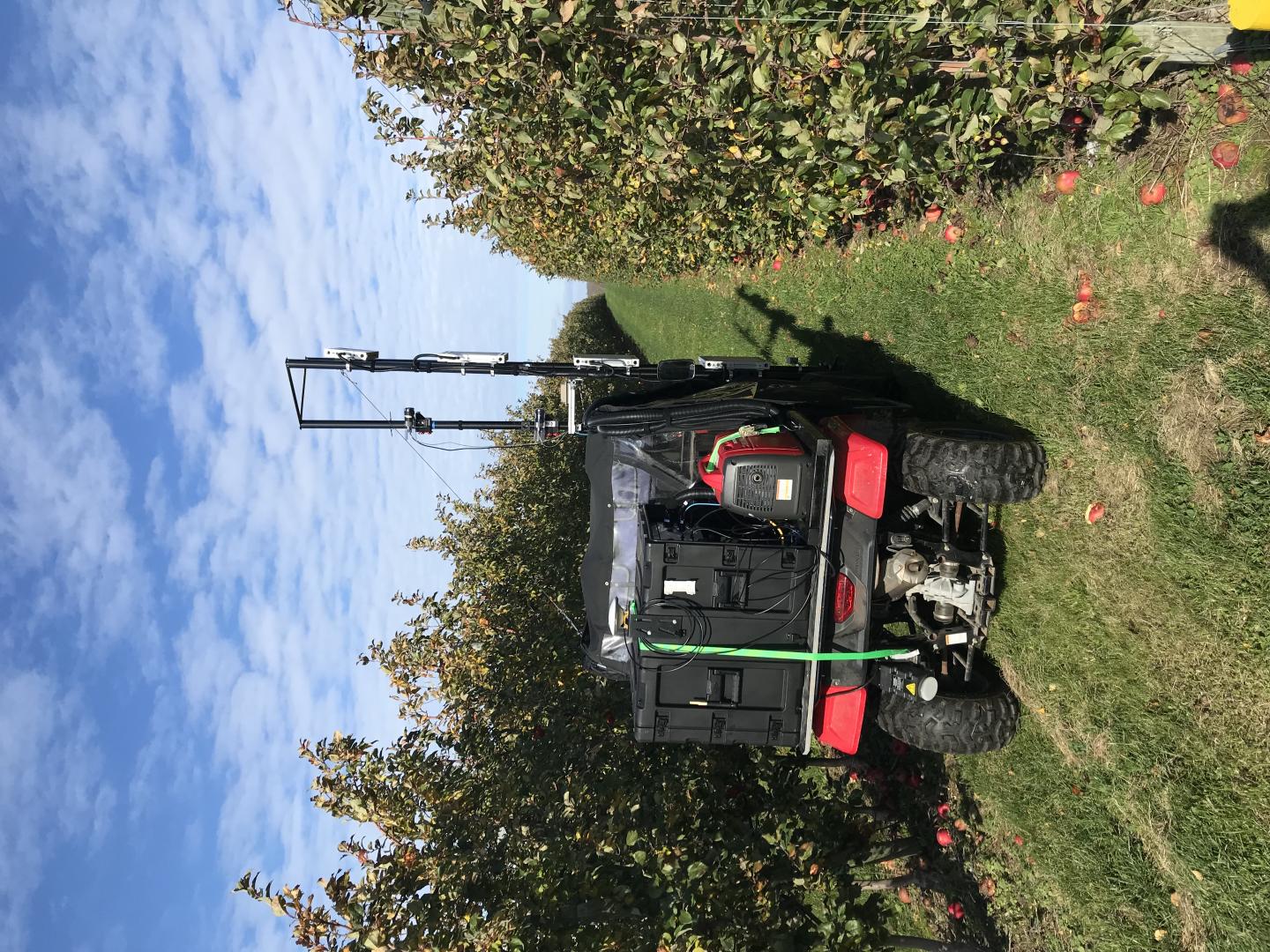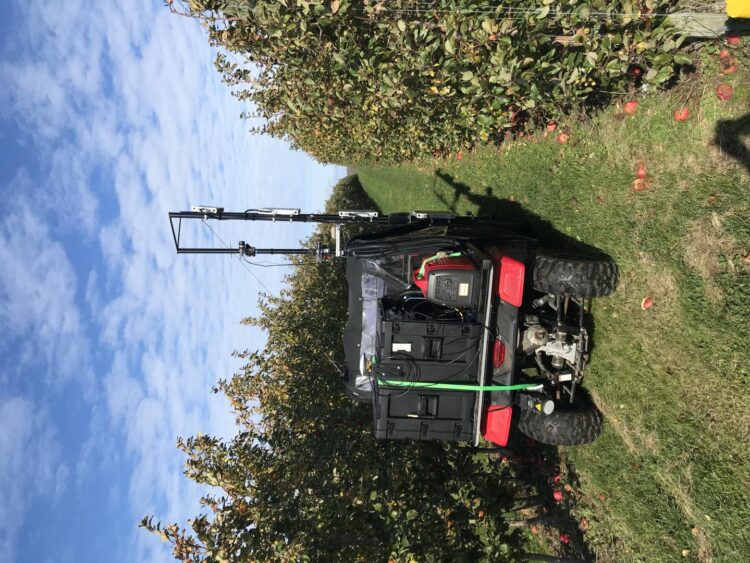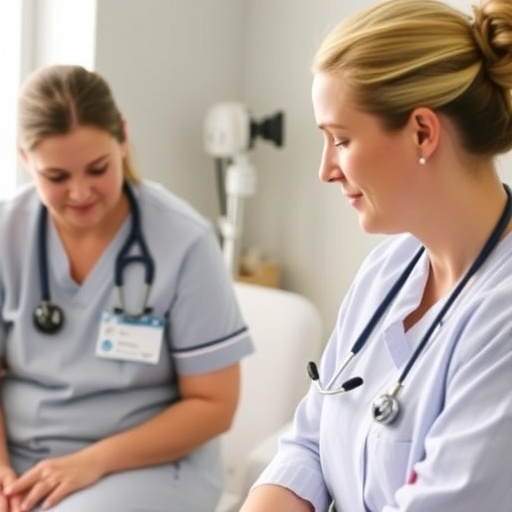
Credit: Cornell University
ITHACA, N.Y. – A Cornell-led, multi-institution team of plant scientists, engineers, economists and outreach agents seeks to use computer vision, automation and robotics to optimize per-tree apple production, which is currently a highly manual and imprecise process.
For apple growers, controlling the number of fruits on a tree is arguably the most economically important management practice. If done right, optimal yields per tree can increase total crop values by $7,000 per acre, compared to less optimal fruit numbers per tree.
“The project is aimed at helping apple growers meet market demand for fruit size and fruit quality to maximize return to the grower,” said the project’s director and horticulture professor, Terence Robinson.
Each year, growers prune buds in winter and thin blooms and fruitlets in spring – both chemically and by hand – to control fruit numbers on their trees. Too many apples on a tree leads to small fruits, which get a low market price, Robinson said. If there are too few apples on a tree, they grow large and are priced high, but there are few bushels per acre, he said.
When flowers bloom, apple growers spray chemicals that regulate plant growth, which cause some of the flowers and fruitlets to drop to the ground, reducing the number of apples that develop. But it’s a difficult process to control.
In the project, the first step will be to use cameras with computer-imaging software at three distinct periods to provide real-time counts of buds, blooms and inch-sized fruitlets.
The project will proceed along parallel tracks with the biology team conducting research to define the biological potential of each region of the country and each major variety, while the engineering team plans to develop an automated robotic vehicle equipped with the computer vision system, which at first could supply counts for a few representative trees in an orchard. Eventually, Robinson envisions robotic vehicles driving through rows and counting every tree, then downloading the information remotely for processing. The machine would also measure trunk diameters, which allows for a measurement of optimal bud numbers based on tree size.
Robinson said this could eventually lead to two scenarios. In one, bud, bloom and fruitlet information is transmitted to workers with earbuds, GPS and cellphones, with pruning instructions. Another possibility is to develop robotic pruning machines, with pruning parameters encoded in software; the machine would receive the information and work down a row, removing branches, buds, flowers or fruitlets based on precalculated numbers for each tree.
One of the project’s co-principal investigators, Miguel Gomez, associate professor at the Charles H. Dyson School of Applied Economics and Management, will evaluate the economics to calculate how much money growers can make by taking these steps and how much the technology might cost them. Since such a system may prove expensive for small growers, options could include offering the technology as a contract for the service, while larger growers may purchase the technology outright.
Ultimately, the technology has potential in almost all tree fruit crops, Robinson said.
The project is made possible thanks to a four-year, $4.8 million grant from the U.S. Department of Agriculture’s National Institute of Food and Agriculture.
###
Media Contact
Lindsey Hadlock
[email protected]
Original Source
https:/





